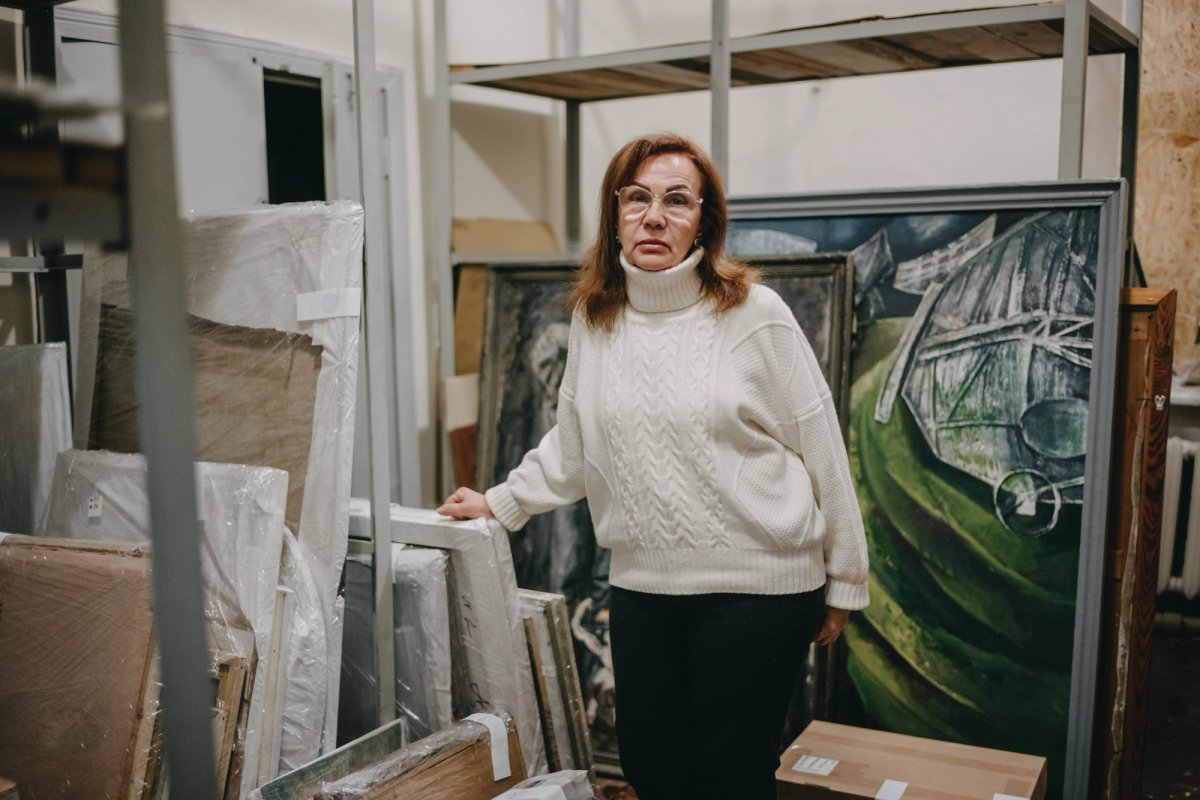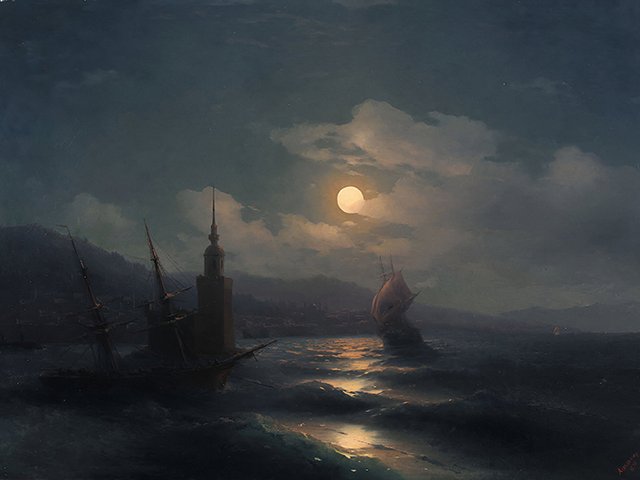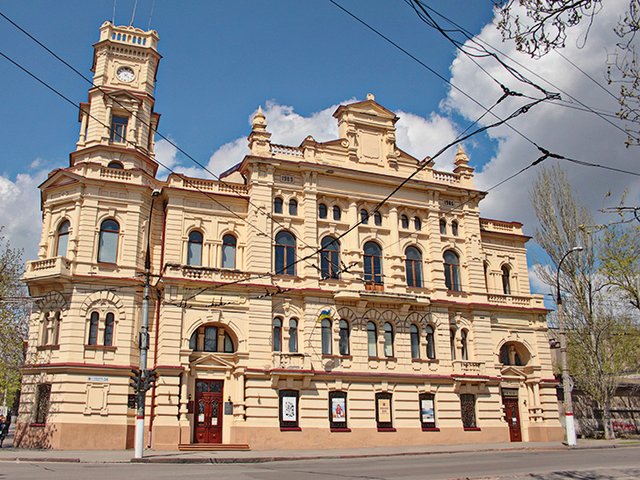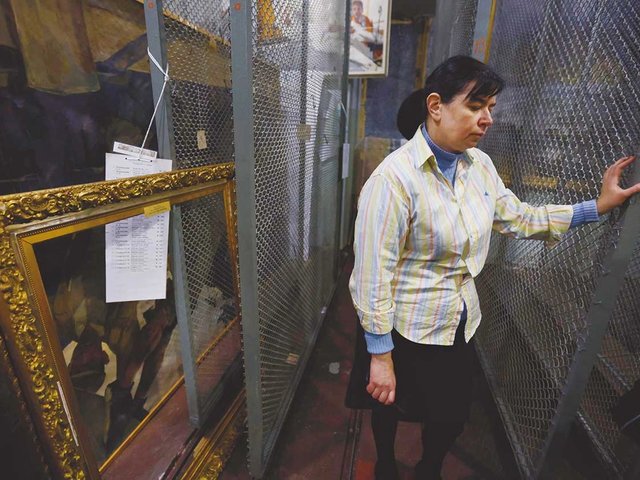Alina Dotsenko has been the director of the Kherson Art Museum in southern Ukraine since 1989. When Kherson was under Russian occupation in 2022, she attempted to save the museum’s art by telling the occupying officials that it had been removed for the building’s renovation. Dotsenko was forced to flee the city and a collaborationist Russian-installed museum director led the occupying officials to the collection.
Shortly before Kherson’s liberation in November 2022, residents raised the alarm that Russian troops had taken truckloads of art from the museum to Simferopol in Crimea, the Black Sea peninsula that Russia illegally annexed from Ukraine in 2014. Russian state television news footage from September 2023 showed Andrei Malgin, the director of the Central Museum of Taurida in Simferopol, with some of the works, which he claimed were being held temporarily for safekeeping.
The Art Newspaper spoke with Dotsenko, who remains the official director recognised by Ukraine and has returned to Kherson, about the latest efforts to identify and recover the museum’s missing art. The interview has been condensed and edited for clarity.
The Art Newspaper:How many works of art were taken by Russia from the Kherson Art Museum and how many have been identified so far?
Alina Dotsenko: Before the occupation, our museum collection consisted of around 14,000 works of art. More than 10,000 of them were stolen. The occupiers’ looting was disguised as an “evacuation” under the slogan of “preserving cultural property” and was accompanied by plainclothes men armed with machine guns. The works were sent to Crimea and at least some of them ended up at Simferopol’s Central Museum of Taurida. It was in this museum that we found evidence of our collection [first from photos by an anonymous Simferopol museum staffer posted by a Ukrainian blogger, then from information circulated by Kherson occupying officials and media, later from a Russian state television report].
To date, 109 works of art have been identified that are definitely in [Russian] hands; 108 of them are in the Central Museum of Taurida. [Editor’s Note: As of 18 June, according to an update on Kherson Art Museum’s Facebook page, 112 works have been identified, of which 111 are being held in the Simferopol museum.] We do not know where the occupiers are keeping another work, Phaeton in Sevastopol by Konstantin Korovin, but it was mentioned in the television report as being part of a structure created under Russian law called the “Kherson Art Museum”. [Editor’s Note: To sow confusion, in occupied territories Russia is creating parallel structures with the same name as Ukrainian institutions.]
What were the most valuable works taken from the museum collection? How do you hope your research will be used to recover the works?
Among the most valuable are Lady with a Dog by Peter Lely (England, 17th century), At monastic abbot by August von Bayer (Germany, 19th century); paintings by Ivan Aivazovsky, Ivan Kramskoy, Mykola Pymonenko and Mykola Hlushchenko; graphics by David Burliuk and Zinaida Serebriakova; Maria Prymachenko’s work, Mykhailo Vrubel’s majolica; and a collection of icons, the oldest of which date back to the 17th century. A lot of Ukrainian works, including those of Kherson artists, have been stolen—and this is a clear attack on our cultural heritage. Before the war, we had the largest collection of works by Oleksiy Shovkunenko, whose name the museum bears. After the robbery, only one painting and eight graphic works of his remained in the museum, which, fortunately, were undergoing restoration at the time of the invasion.
Our work on identifying stolen works of art is primarily [to provide] evidence that specific works are, or were at some point, in the Central Museum of Taurida. Ukrainian law enforcement agencies are working with this evidence, and we hope that Interpol will use this information.
We want our identification work to attract the attention not only of the Ukrainian but also of the international community. We want it to be widely publicised so that it becomes clear that the so-called “great Russian culture” is a fiction, because a truly cultural nation will not commit crimes against the cultural heritage of another country, so that the international community would make the perpetrators answer for their crimes.
Do museum staff follow the news from Russia and Crimea on a daily basis to look for new images and videos of the missing works?
Of course, but the media in Russia and Crimea receive information from Kremlin-controlled local sources, namely the “Ministry of Culture of the Kherson Region”, other public channels in the occupation zone, and social media posts of the Russian-formed structure called the Kherson Art Museum. That is why we pay the closest attention to them.
Can you describe some of the findings that have emerged?
The occupiers documented their own crimes. On 2 April 2023, they spread the news on their official channels about the signing of a “storage agreement” between the “Ministry of Culture of the Kherson Region” and the directorate of the Simferopol museum. It indicated that, despite our fears, the collection is still in the Central Museum of Taurida—or, rather, in its concert hall, which was converted into a storage space. Whether or not all the “evacuated” works are there is another question, but several of our works were immediately recognised in the photos [published by Russian state media].
The museum director, Andrei Malgin, has repeatedly confirmed to mass media that he has about 10,000 works of art from the Kherson Art Museum “in storage”. However, in May 2024, for the first time, he refused to comment to Ukrainian journalists. There is a risk that Malgin was given a command to stay quiet in preparation for transporting the stolen collection, as well as the risk that not all the stolen works were transported to Crimea, that some could scatter along the way and end up in private collections. [Editor’s Note: Ukrainian media reported in June that the culture ministry of Russian-annexed Ukraine had conveyed an order from Russia’s federal culture ministry to provide by 1 July updated information regarding the “evacuation sites of museum valuables” in case of “emergency situations”.]
Is the taking of Ukrainian art under the pretext of “protection” part of a plan to destroy Ukraine’s cultural identity?
All of these crimes are the result of the Russian leadership’s single obsessive goal of absorbing Ukraine and destroying its identity. To call Ukrainian art Russian (the Russian Empire has been rewriting the identity of artists for centuries), to “re-educate” children, to “re-programme” their consciousness so that they do not perceive themselves as Ukrainians—these are terrible crimes that must be stopped.
What can international museums and other cultural organisations do to support the recovery of Kherson’s works of art?
There is no point in talking about initiating changes to international cultural legislation. Russia will not comply with it anyway, but will hide behind it, as it does now with the requirements of the Hague Convention.
In my opinion, the world’s cultural organisations should completely stop co-operating with the Russians, ignore their cultural initiatives, which are a manifestation of Russian propaganda, reconsider their view of “great Russian culture”, return Ukrainian identity to artists who are still considered Russians, and openly call out the Russians looters. None of this will help to return our collection; it can only be returned after Ukraine’s victory.
Russian state television’s version: Kherson works taken ‘to preserve them’

Andrei Malgin, the director of the Central Museum of Taurida in Simferopol Alexandr Polegenko/Sputnik
In September last year, Andrei Malgin, the director of the Central Museum of Taurida in Simferopol, appeared on the Crimean edition of Russian state television. He gave a reporter a tour of the museum’s concert hall, which is being used as a repository for works that were taken by Russian forces from the Kherson Art Museum in Ukraine. The four-minute report, in which Malgin cites international law as justification for moving the collection, shows close-ups of the paintings.
Malgin’s comments and screenshots from the television report are being used by the Kherson Art Museum to track the taken works. “While one side was shooting at the civilian infrastructure of the Kherson region,” according to the reporter Anastasia Kalugina’s introduction, “others were first of all saving the lives of people and also valuable cultural heritage from Kherson museums.” Walking among storage shelves lined with paintings at the Central Museum of Taurida, Kalugina said that “around 10,000 paintings” from Kherson are being kept there, some from the 19th century, but most from the Soviet era, including landscapes of Crimea.
Malgin said: “The Central Museum of Taurida, guided in this case by the [Hague] Convention for the Protection of Cultural Property in the Event of Armed Conflict—this convention obliges all sides of an armed conflict to take all possible measures to preserve cultural heritage—have provided such assistance. Our staff have built these shelves on which the paintings are stored. An alarm system has been installed and the concert hall has been turned into such a temporary repository.”
The reporter said that since some of the paintings depict “exploits of Soviet citizens”, they had to be protected from “the conditions of total decommunisation in Ukraine”, and that reports that the collection was looted are “fake news” since the works were moved in order to “preserve them” and to “avoid what had happened to the Mariupol Museum of Local History”, which Russian authorities say was destroyed by fire from Ukrainian forces. Mariupol, in eastern Ukraine, was nearly destroyed by Russia in the early days of the invasion and illegally annexed along with other regions of Ukraine, including parts of Kherson, in September 2022.






